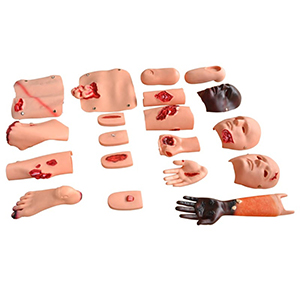23-11-2024
ADA MED SUPPLY LIMITED
Article tag: Trauma Assessment Module trauma first aid model
The trauma assessment module plays a vital role in improving the coping capacity of medical staff. In order to more effectively improve the combat response level of medical personnel, the following are some key strategies:
By simulating real trauma scenes, medical staff can learn and practice in an environment close to actual combat. These scenarios should include not only common trauma types, but also complex, urgent and changeable situations to fully test the response speed, judgment and decision-making of the medical staff.
In the trauma assessment module, interactive training is the key to improve the coping ability of medical staff. By simulating the interaction between patients and healthcare workers, healthcare workers can actually operate and communicate in a simulated environment, thereby improving their communication skills, teamwork and emergency response capabilities.

With the continuous development of medical technology, the concept and technology of trauma treatment are constantly updated. The trauma assessment module should keep pace with The Times and incorporate the latest treatment concepts and technologies, so that medical personnel can access the most cutting-edge knowledge and skills during training.
The professional background, skills and experience of each health care provider is different, so the trauma assessment module should provide an individualized training program. With customized training content and difficulty, healthcare professionals can learn and improve at their own pace, so that they can better cope with the challenges of the actual work.
In summary, the trauma assessment module can significantly improve the coping ability of medical staff by simulating real scenarios, strengthening interactive training, providing immediate feedback, incorporating the latest treatment concepts and technologies, and developing personalized training programs. These strategies not only help medical staff cope with emergencies more calmly in actual combat, but also improve their treatment efficiency and success rate, thus bringing better treatment results and survival chances for patients.